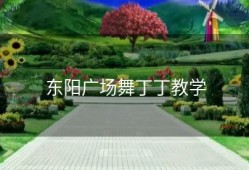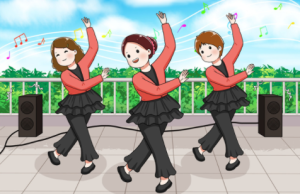Square Dancing: To Ban or Not to Ban? A Balanced Perspective
- 广场舞百科
- 2024-04-06 12:30:30
- 32
Content:

Square dancing has undeniably become a significant cultural phenomenon in our country, particularly in recent years. It's a form of group dance that has brought joy, exercise, and a sense of community to many, especially the middle-aged and elderly. However, as with any popular activity, it has not been without its share of controversies. The question of whether square dancing should be forbidden due to noise disturbances and other issues has sparked heated debates. In this discussion, I would like to present a balanced view on the topic, considering both the benefits and potential drawbacks of this pastime.
The current state of square dancing can be described as thriving. In parks, plazas, and even residential neighborhoods across the country, groups of dancers gather every evening to dance to the rhythm of music, often with enthusiasm that is infections. It has become a staple of leisure life for many, providing not only a form of exercise but also a social outlet for participants.
From the perspective of health and well-being, square dancing offers numerous advantages. It's a low-impact, rhythmic activity that promotes cardiovascular fitness, improves flexibility, and enhances coordination. For many older citizens, it's a fun and engaging way to stay active, which is crucial for maintaining their physical and mental health. Moreover, the social aspect of square dancing cannot be overlooked. It provides a platform for people to connect, share experiences, and build friendships, thus enriching their social lives and fostering a sense of belonging within the community.
Despite these positive aspects, there are legitimate concerns raised by those living in proximity to the dancing venues. The loud music, often played late into the night, can be a source of significant distress for residents who seek peace and quiet in their homes. Noise pollution can lead to sleep disturbances, stress, and a decrease in the quality of life for these individuals. Additionally, there have been instances where the occupation of public spaces by dancing groups has caused inconvenience to others who wish to use the same areas for different activities.
Considering these points, a complete ban on square dancing does not seem to be the most appropriate solution. Instead, a balanced approach that addresses the concerns while preserving the cultural and health benefits of the activity should be adopted. Here are some suggestions:
1、Designated Areas: Local authorities could set up designated areas for square dancing, away from residential zones. This would help contain the noise and ensure that the dancers do not encroach upon the quiet enjoyment of others.
2、Time Limitations: Implementing time restrictions on when square dancing can take place would be another effective measure. Setting reasonable hours, such as ending the activities by 9 PM, would strike a balance between allowing the dancers to enjoy their pastime and respecting the need for quiet in residential areas later in the evening.
3、Volume Control: Using noise control technology or simply lowering the volume of the music can significantly reduce the impact of noise on nearby residents. This could be achieved through the use of headphones or sound systems with adjustable volumes.
4、Community Engagement: Encouraging dialogue between the dancers and the local community can lead to mutual understanding and compromise. Organizing community events that include square dancing can also help integrate the activity into the fabric of local life in a way that is acceptable to all.
In conclusion, the issue of whether to ban square dancing is not a straightforward one. It requires a nuanced approach that takes into account the health, social, and cultural benefits it provides, as well as the legitimate concerns of those affected by it. By implementing the suggestions outlined above, we can maintain the positive aspects of square dancing while minimizing the negative impact on the community at large. Let us find a harmonious middle ground that respects the rights and needs of all parties involved.
免责声明:本网站上的所有文章内容均来自互联网。本网站仅在法律允许的范围内使用、分享和传播这些内容,不违反任何版权或知识产权法。如发现本站有涉嫌抄袭侵权/违法违规的内容,请发送邮件25538@qq.com举报,一经查实,本站将立刻删除。
本文链接:https://www.zhuangrou.com/gcw/7267.html



















